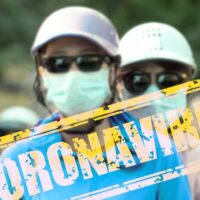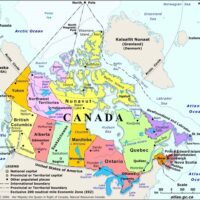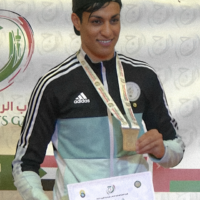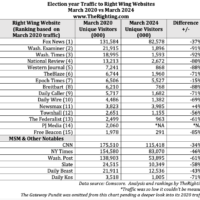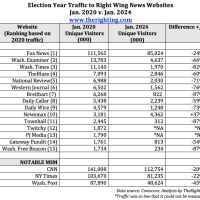
Providing Tips on Inclusive Language for a More Than Quarter of a Century
A Q&A with Rachele Kanigel, the editor of “The Diversity Style Guide”
By Jaden Satenstein, May 31, 2023
What are the best terms to describe undocumented immigrants?
How should one refer to different gender identities?
Is the “B” in “Black” capitalized?
These are the kinds of questions Rachele Kanigel explores when editing “The Diversity Style Guide,” an online resource that provides guidance to journalists on how to cover multicultural communities with accuracy, nuance and sensitivity.
The first iteration of the Guide was produced more than 25 years ago by the Center for Integration and Improvement of Journalism at San Francisco State University. Kanigel, a former newspaper reporter and now professor at SFSU, transformed the guide into a searchable, constantly updated website with help from a grant from the Society of Professional Journalists Foundation in 2016, allowing users to explore a large glossary of terms related to topics like disability and race.
Kanigel published a book version of the guide in 2019 and now works with companies and organizations like WebMD and Freddie Mac to train staffers on inclusive language related to their respective fields. Kanigel spoke to TheRighting’s Jaden Satenstein about her work on “The Diversity Style Guide” and how the media uses –– and misuses –– language about diverse populations. (The interview has been edited for clarity.)
How has the Guide’s content evolved since you started editing it?
I often say to people, language is constantly changing and evolving, but even in the last three or four years, a lot of terms have changed. The meanings of certain terms have changed, or the awareness of certain terms have changed. So, for example, when I first edited the Style Guide, I had terms around non-binary people and around gender, and that area has just exploded over the last few years, where there’s all these other terms that are coming into play.
I also think that there’s greater awareness and sensitivity about certain terms. So, [the Guide is] constantly being updated, and I get messages from people, people pull me aside at a cocktail party and say, “Oh, have you thought about this term?”
When you update the guide, you work with organizations representing a wide variety of communities, like the Asian American Journalists Association and GLAAD. What kinds of reactions have you received from them?
When I was first approaching these different organizations, they were universally accepting of it. Everybody liked the idea of bringing these terms together into one place. Everybody liked the idea of being included in the guide and sharing their resources, because the whole point of these entries is to share them with as many people as possible.
Have you received any pushback or criticism of your work on the Guide from fellow journalists?
When I first started doing this work, there were people who said, “Oh, so this is a guide to how to be politically correct, or how to be woke.” There were people who would sort of joke with me about it. I have a few relatives who have accused me of this.
But I think that, in general, I haven’t gotten a whole lot of pushback. Certainly people have raised questions about whether certain terms should be capitalized or whether I phrased things in such a way, and I always am happy to go back and look at things and do some more research about whether something should be changed. I’ve made tons of changes in the Guide over the years.
Have you seen any examples of right-wing media manipulating language to push an agenda?
I think there’s a lot of that going on, particularly around abortion. There’s lots of language like “unborn child” and “the unborn.” I think there’s a lot of language used by right-wing media that is insensitive or dehumanizing. Again, around issues like abortion, immigration, transgender people. There’s lots of terminology there where I think they sometimes embrace language that my research has shown is either offensive or inaccurate. I think sometimes there’s a resistance to using terminology that’s seen as more progressive.
I’m sure we will see an influx of hateful right-wing coverage of Pride Month starting this week. How might outlets use language to push a certain agenda about LGBTQ+ issues?
Far-right organizations and individuals often weaponize language against trans people. For example, they will sometimes purposely misgender people or reject or refuse to use non-traditional pronouns like the singular “they” or words like “cisgender.” They will sometimes intentionally use outdated, inaccurate or offensive language like “transsexual” about trans people.
They’ve also invented terms like “parental rights,” embraced terms like “transgenderism” and mischaracterized gender-affirming health care as “chemical castration” and “sexual mutilation.”
How do you think people can be vigilant about finding news they can trust and understanding how the media they consume may be influencing their views?
I think part of it is paying attention to where stories or information is coming from. Looking at the ownership of different media organizations, and questioning the language being used and the terminology that’s being kicked around.
News consumers today have to be much more educated than they needed to be years ago. I think there’s a lot of manipulation going on in the media. [Readers] have to be really savvy consumers, because there’s lots of information out there that’s wrong. That’s intentionally trying to manipulate people, dissuade people, trick people. When you’re watching a news report, or listening or reading the news report, you need to be really thinking about, “Where is this information coming from? What’s missing? Who’s not being interviewed?”
Jaden Satenstein (@jadensat) is a writer, producer and social media consultant. She has worked for WNYC, FRONTLINE PBS, the St. Louis Post-Dispatch and Straus News Manhattan.
Interested in more news about right-wing websites curated especially for mainstream audiences? Subscribe to our free daily newsletter.
The Guide is an online resource that provides guidance to journalists on how to cover multicultural communities with accuracy, nuance and sensitivity. The first iteration of the Guide was produced more than 25 years ago by the Center for Integration and Improvement of Journalism at San Francisco State University.





